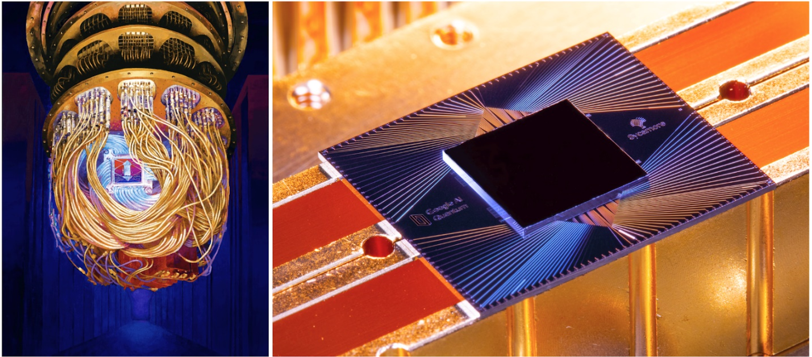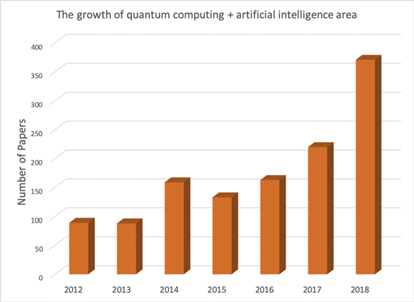On Engineering Grand Challenges
Published:
The challenge that I want to contribute to is engineering the tools of scientific discovery. I am interested in this challenge because history has proven that new tools and technologies shape the world we live in. We are able to discover more about it and make use of those discoveries in engineering. For example, the concept of mechanical advantage is probably one of the earliest and most intuitive discoveries of physics that we take for granted. Things that are unknown to us now will one day be commonplace, but in order to discover those things which we do not know we have to engineer the tools that will help us get there.
Quantum computers are a revolutionary new tool that has led to new discoveries about physics and has increased the speed and scope of problems that could never be solved using classical computers. These machines are in their early stages of development. They are not robust enough to fit in your pocket and they require precise measurement technologies in order to measure the state of the qubits that make up what we know classically as bits. There is a need to engineer a measurement technology that can eliminate the error in current quantum computations [3]. Quantum computers provide us with the ability to not only compute classical problems exponentially faster (quantum advantage) but also solve problems that are not able to be solved at all on classical computers (quantum supremacy). Google’s Sycamore Processor proved quantum supremacy in 2019 and they achieved a quantum advantage of 1.57 billion. A computation that would take a classical computer 10,000 years to compute would only take a quantum computer 200 seconds to complete.

Figure 1. Left: Cryostat for the Quantum Computer. Right: Google AI’s Quantum Processor Sycamore
A quote directly from google “For example, we can envision quantum computing helping to design new materials — lightweight batteries for cars and airplanes, new catalysts that can produce fertilizer more efficiently (a process that today produces over 2% of the world’s carbon emissions), and more effective medicines.”[4]. The biggest challenge that needs to be overcome by engineers is creating a quantum computer that is fault tolerant. Since these machines are capable of processing so much information so quickly, discrete errors will propagate quickly. These errors arise due to insufficient tooling of measurement equipment, and these can impact the precision of the solutions in a similar way that classical computers are limited in their precision.
In order to make use of this technology and push forward the grand challenges, I would need to continue my education in to graduate school. Undergraduate courses would not have prepared me for the intense level of mathematics, physics, computer science and electrical engineering knowledge needed to improve the current technology. I am interested in the field of artificial intelligence and researchers in that field are increasingly making use of the quantum advantage provided by this new technology (Figure 2). I would see myself working for Google AI in the future since they achieved quantum superiority and are leading in artificial intelligence research.

Figure 2. Number of papers in the field of artificial intelligence and quantum computing (Source: Scopus).
From a mangers perspective in order to achieve the goal of solving this grand challenge I would need to do the following. Complete graduate school and get involved with research that relates artificial intelligence and quantum computing. Further, I would need to become proficient in quantum mechanics and learn how to create quantum algorithms. I could then begin to experiment with highly complex and detailed simulation environments and deploy the trained machine or system in the real world to determine the validity of the results. The problems that could be tackled are wide ranging, but I would find myself working with robotics and intelligent machines. Being able to leverage quantum advantage would make creating robust systems much more attainable [1], [2].
References
[1] Tacchino, F., Macchiavello, C., Gerace, D. et al. An artificial neuron implemented on an actual quantum processor. npj Quantum Inf 5, 26 (2019). https://doi.org/10.1038/s41534-019-0140-4.
[2] Biamonte, J., Wittek, P., Pancotti, N. et al. Quantum machine learning. Nature 549, 195–202 (2017). https://doi.org/10.1038/nature23474.
[3] Arute, F., Arya, K., Babbush, R. et al. Quantum supremacy using a programmable superconducting processor. Nature 574, 505–510 (2019). https://doi.org/10.1038/s41586-019-1666-5.
[4] Martinis, John. “Quantum Supremacy Using a Programmable Superconducting Processor.” Google AI Blog, 23 Oct. 2019, ai.googleblog.com/2019/10/quantum-supremacy-using-programmable.html.
